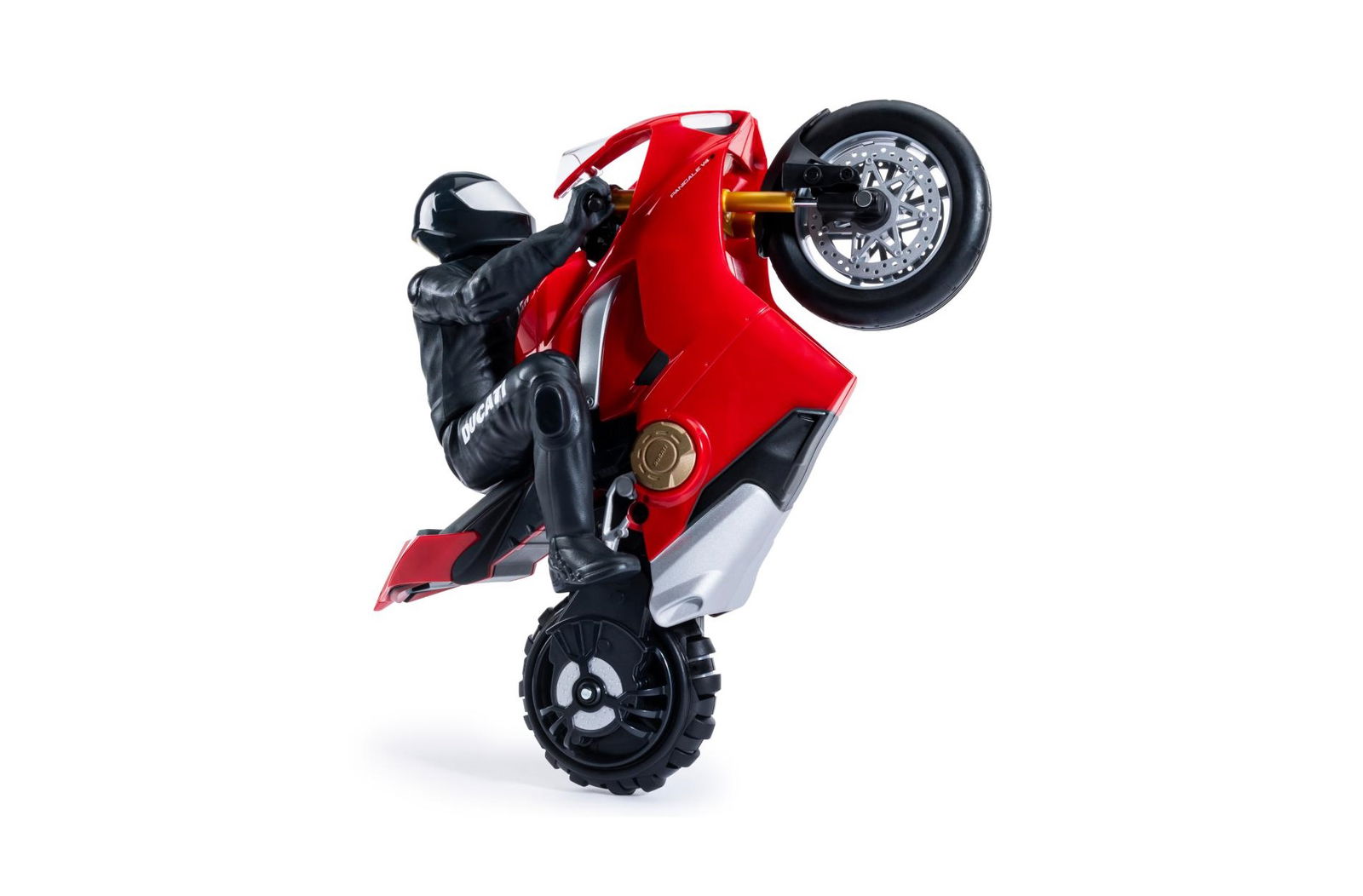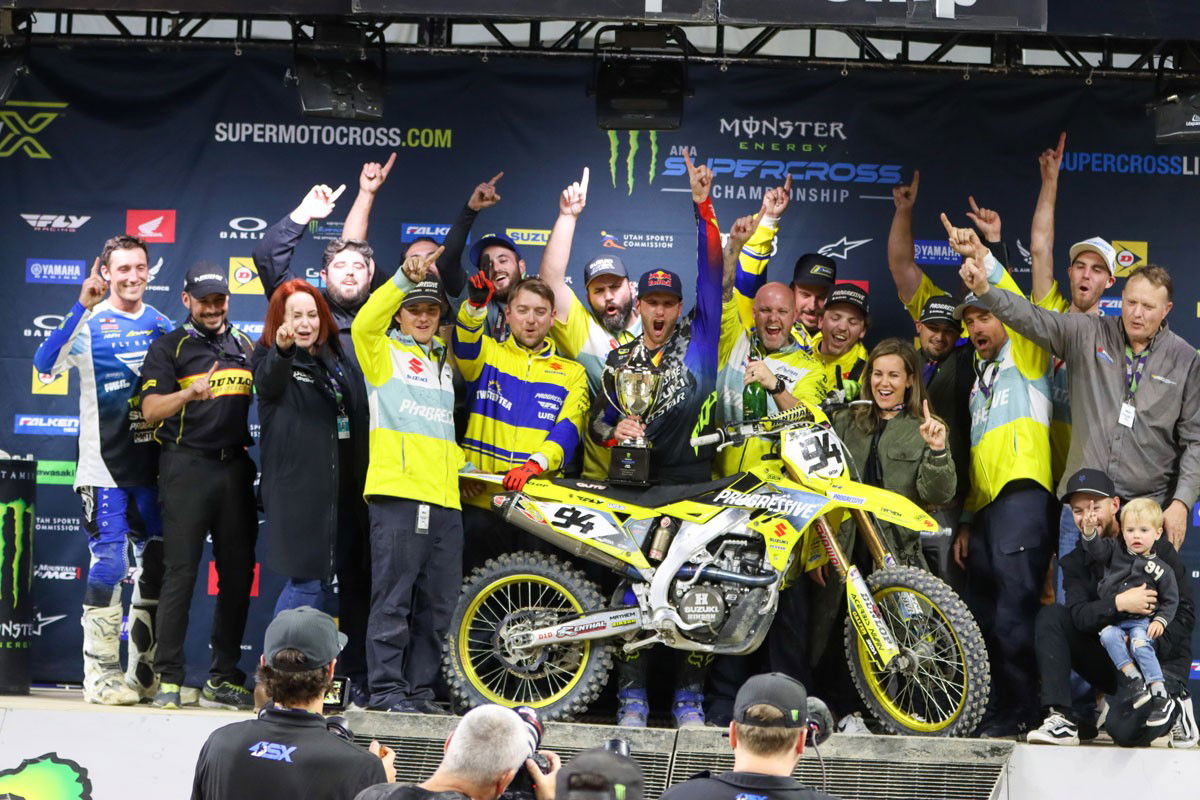Why MotoGP needs to slow down to become better
MotoGP bikes are too fast, but will slowing them down really create a better MotoGP? And, is pure horsepower the only issue, or are their other factors?

Aprilia Racing CEO, Massimo Rivola, has said that MotoGP bikes are too fast, and need to be slowed down.
Rivola arrived in MotoGP a few years ago when Aprilia hired him away from Ferrari’s F1 team. People were sceptical, because ‘what do F1 people know about MotoGP?’ Rivola, though, has been revolutionary for Aprilia, who won their first MotoGP race last year, and are behind only Ducati in the aerodynamic arms race that currently dominates MotoGP.
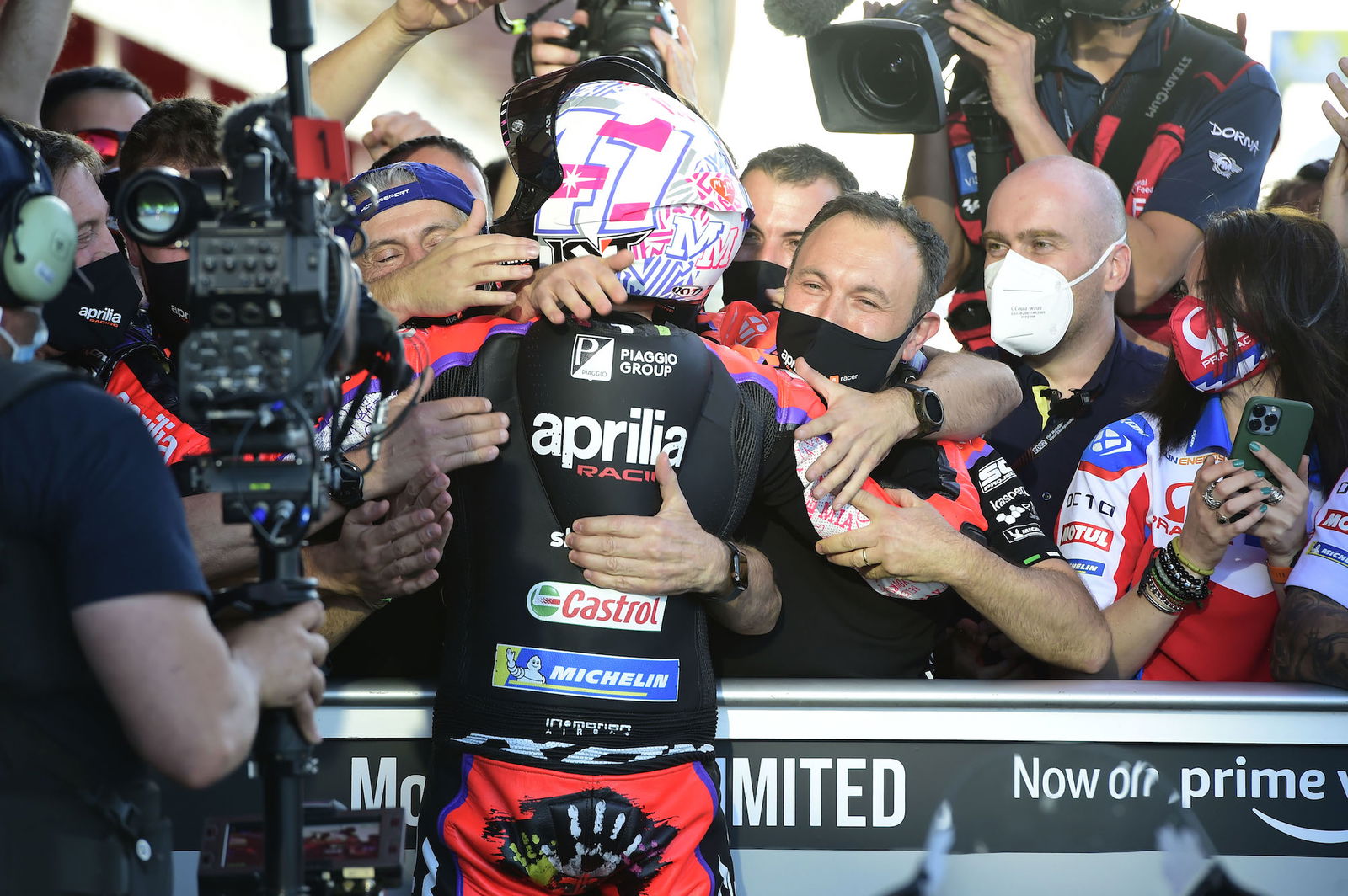
Speaking to Speedweek, Rivola said that manufacturers are considering in their discussions for the next set of regulations for MotoGP - which will last from 2027 until 2031 - that aerodynamics and ride height devices should go, or their effect be reduced, that electronics should be scaled back, and that in general the speed of the bikes needs to decrease. Even a reduction in engine displacement is apparently on the table.
The key point, though, is that the speed of MotoGP bikes needs to decrease, for racing, and for safety.
In the past few years, since 2015, MotoGP’s development has accelerated. Oddly, that developmental acceleration was almost increased by the Covid pandemic, as manufacturers looked for ways to improve without being able to increase the performance - or change anything inside - of the engines used in their Grand Prix prototypes.
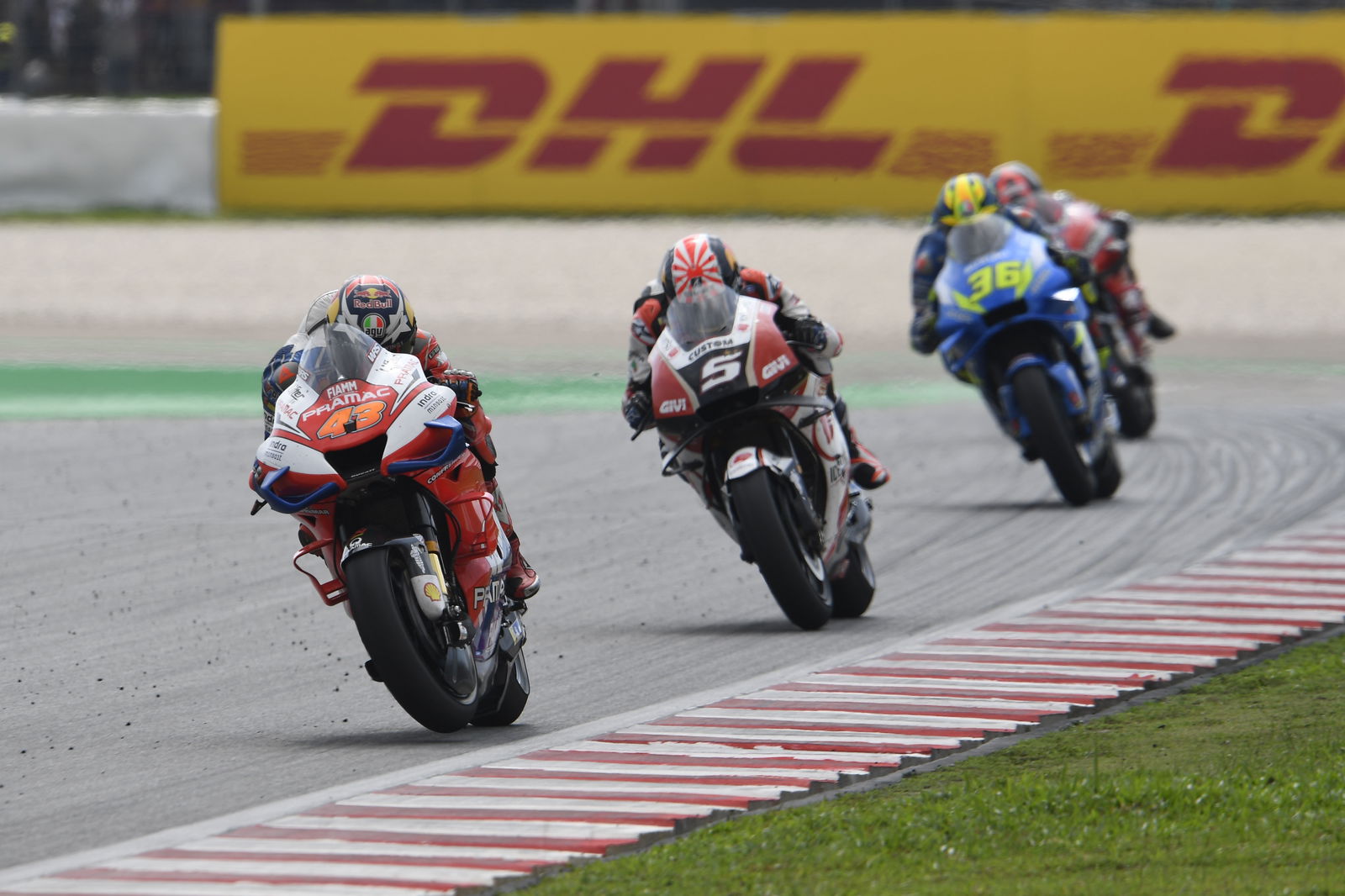
That pause in engine development led to the arrival of ride height devices. Start devices were already in MotoGP from 2019, and Ducati were testing their use away from the start with Jack Miller by the end of that year. But, in the three years since then, the systems have become standard across the grid, like aerodynamic wings or seamless gearboxes, and have become smoother, their continued refinement granting increasing performance gains.
Mostly this has been related to the rear devices, although Ducati tried to utilise its front device from the start of 2022, but ultimately failed, and the front devices were then banned, anyway.
The ride height devices, in conjunction with the aerodynamic wings which arrived in 2015 and continue to evolve like everything else, have led to extremely fast MotoGP bikes, yet in the case of some manufacturers - especially Ducati - relatively easy bikes to ride.
The relative (relative being the important word, since no 250+-horsepower motorcycle could be described as ‘easy to ride’, especially when one the limit as all MotoGP riders are) ease with which some MotoGP bikes are ridden at race speeds now is in some ways good, and in some ways bad.
Zach Osborne, the 2020 AMA 450MX Pro Motocross Champion, often gives the opinion that simple race tracks create better racing than complicated ones, because the simplicity of the track means the top riders are able to make less difference compared to their rivals, who are maybe slightly less technically skilled.
Others will say that complicated tracks create better racing because their technicality generates mistakes. The only way for one rider to gain a lasting advantage over their rivals is through greater technical skill to manage the challenge provided by the track, and which allows them to ride faster than the others while also making less mistakes - or being ‘better’.
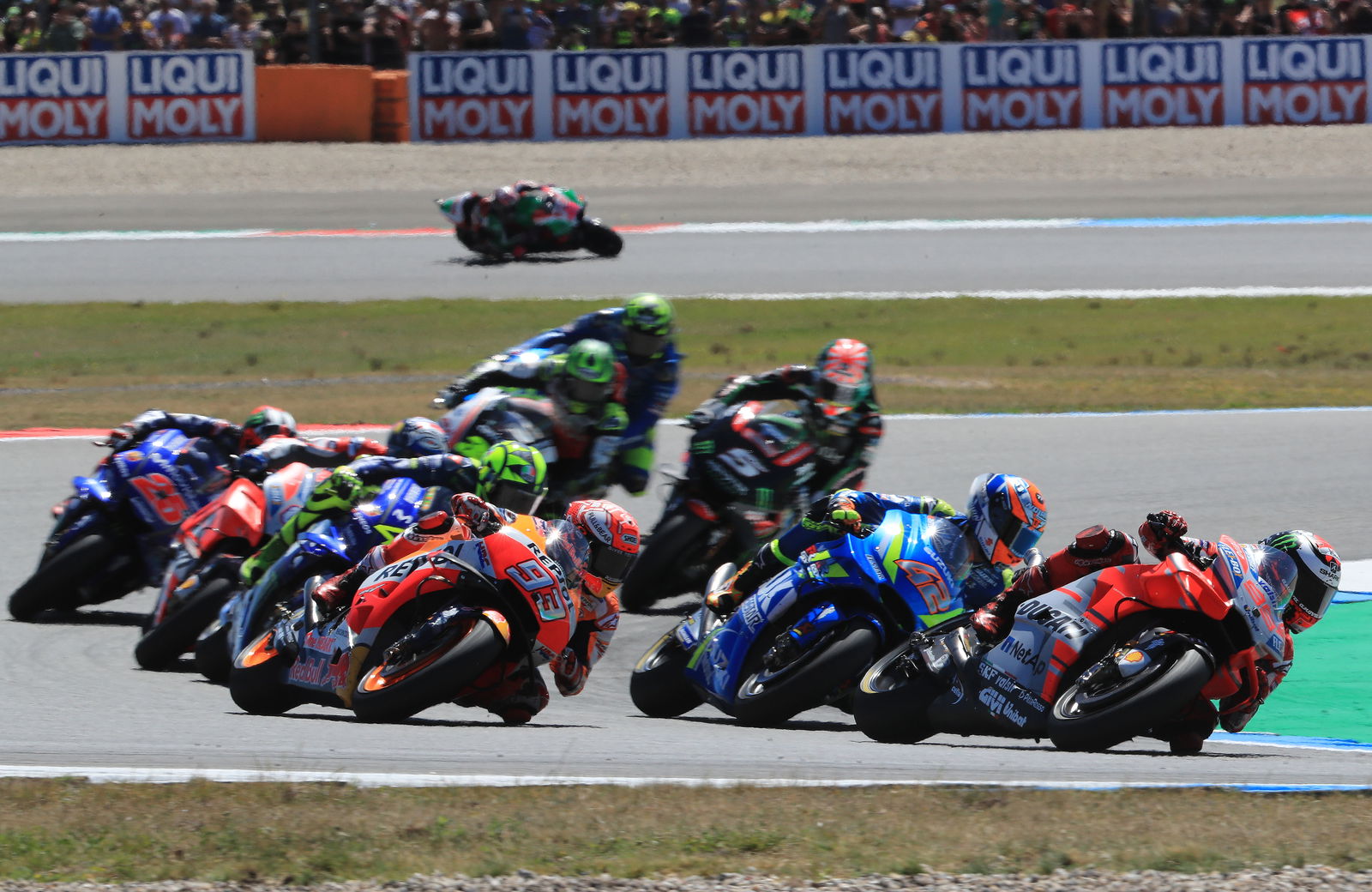
The same ideas can be applied to short circuit road racing motorcycles. It can be said that easy bikes create better racing, because riders are able to stay closer together as a result of the relative lack of challenge provided by their motorcycles. WorldSSP300’s racing is a good example.
On the other hand, it can be said that bikes which are difficult to ride can create better racing because their challenge creates mistakes, and the mistakes keep the racing entertaining. The only way for one rider to gain a lasting advantage over their rivals is through greater technical skill to manage the challenge provided by the motorcycle, and which allows them to ride faster than the others while also making less mistakes, and taking better care of the tyres. 500cc racing is a good example.
What you get with ‘easy’ bikes is many riders able to stay within small distances of each other, almost regardless of their respective skill levels; with more challenging bikes you get greater separation, larger gaps appear between riders, but the ones who are relatively equally matched on ability will sometimes be able to challenge each other to the end of the race - but it will be only two or three, generally speaking.
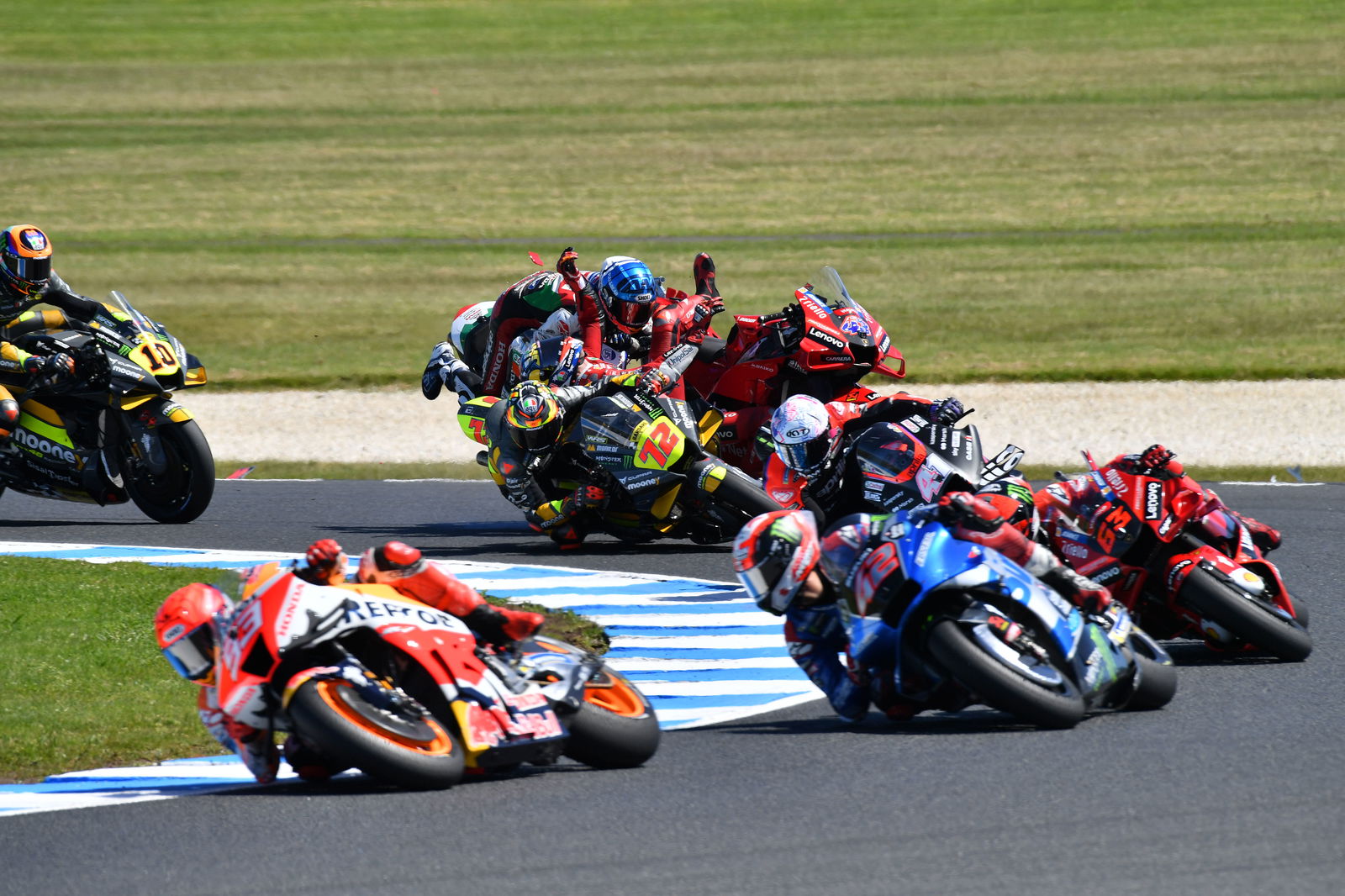
The choice between the two is complicated. Bikes which are difficult to ride are dangerous because they challenge even the very best; but when incidents occur they generally happen with riders separated from their rivals. On the other hand, bikes which are more simple to ride are safer alone, but the close racing they create can itself be dangerous, even at lower speeds, because if a rider crashes in the middle of a pack it can be impossible for those behind them to avoid the fallen rider (again, WorldSSP300).
The other danger of simpler bikes to ride is that they can get even faster than difficult bikes, because manufacturers can extract more performance from a motorcycle that a rider is comfortable with. Not only that, but the riders can then use that additional performance when it has been applied.

In the 1980s, when 500cc two-strokes were going mad, so were Group B rally cars. They began in 1983 with the 350-horsepower Lancia 037, which was extremely light, very dangerous, and rear-wheel drive. Attilio Bettega died driving one in Corsica in 1985. By the end of ‘85, Lancia brought their four-wheel-drive Delta S4. The Delta had more like 600 horsepower at its peak, thanks to a twin-charged (super- and turbocharged) four-cylinder engine, but even though that power went to all four wheels the car was still very dangerous.
It remained light, like its two-wheel-drive predecessor, and the fuel tank was under the seat, but above all it was simply too fast for the drivers to keep up with over long events. Audi drivers had the same problem with the second-evolution Quattro, and so did Peugeot’s pilots with the Evo 2 205 T16.
Although the performance of the cars had increased, the same attention had not really been paid to their driveability, so not only were they going faster than ever, but they were doing it without anything to make life easier for the drivers who were already stressed by cars with 300 horsepower less just a few years before.
In the end, Group B ended when Henri Toivonen died driving a Delta S4 on the Tour de Corse in 1986, a year on from Bettega’s death on the same event. Toivonen was leading at the time, and had won the Delta’s debut World Rally, in Britain on the 1985 RAC, and then again on the first rally of 1986 in Monte Carlo.
The factual cause of Toivonen's death is unknown but it is accepted even at the time, as it is now, that the cars had become too fast for the drivers to safely manage over the course of a World Rally, and that was in part the cause of Bettega's death a year before Toivonen's.
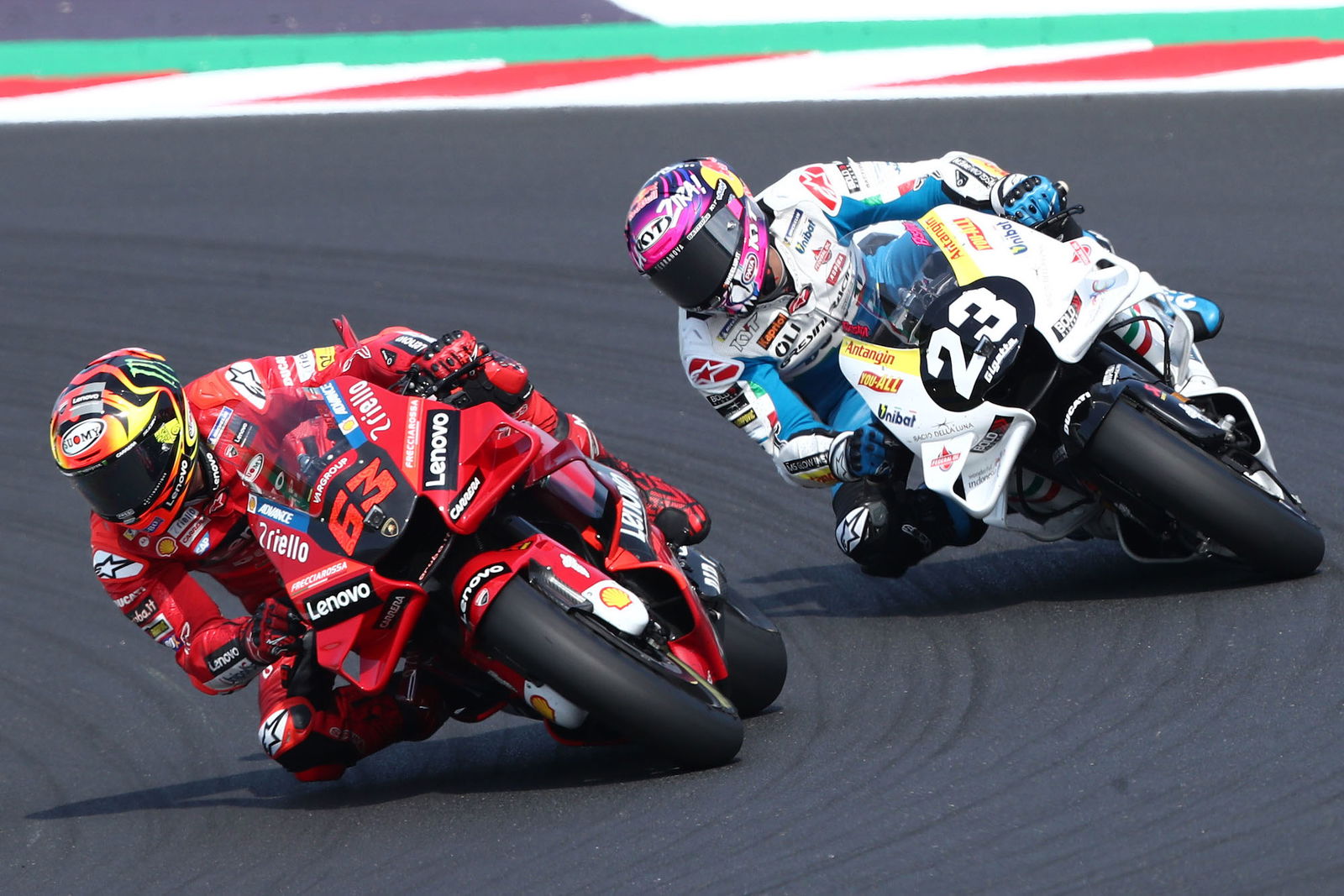
In modern MotoGP, the problem is almost opposite. The bikes are not too fast for the riders to keep up with, but that in itself is a problem when they are already going as fast as they are. The riders have margin, but the tracks do not.
An increasingly common occurrence in the last few years of MotoGP has been to see bikes reach the barriers when a rider has crashed. It is easy to blame the circuits, and in some cases it is correct to do so, but when MotoGP arrives in almost every circuit on the calendar and Aleix Espargaro is talking to journalists on Friday afternoon about barriers being too close then maybe the problem lies elsewhere.
If a MotoGP bike reaches 220mph, it is no longer a major event. 220mph is almost the standard now in places like Lusail, Texas, and Mugello. Mugello was built in the 1970s, when the only things to go 220mph were jetliners, so to expect it to be able to accommodate such fast MotoGP bikes seems unrealistic.
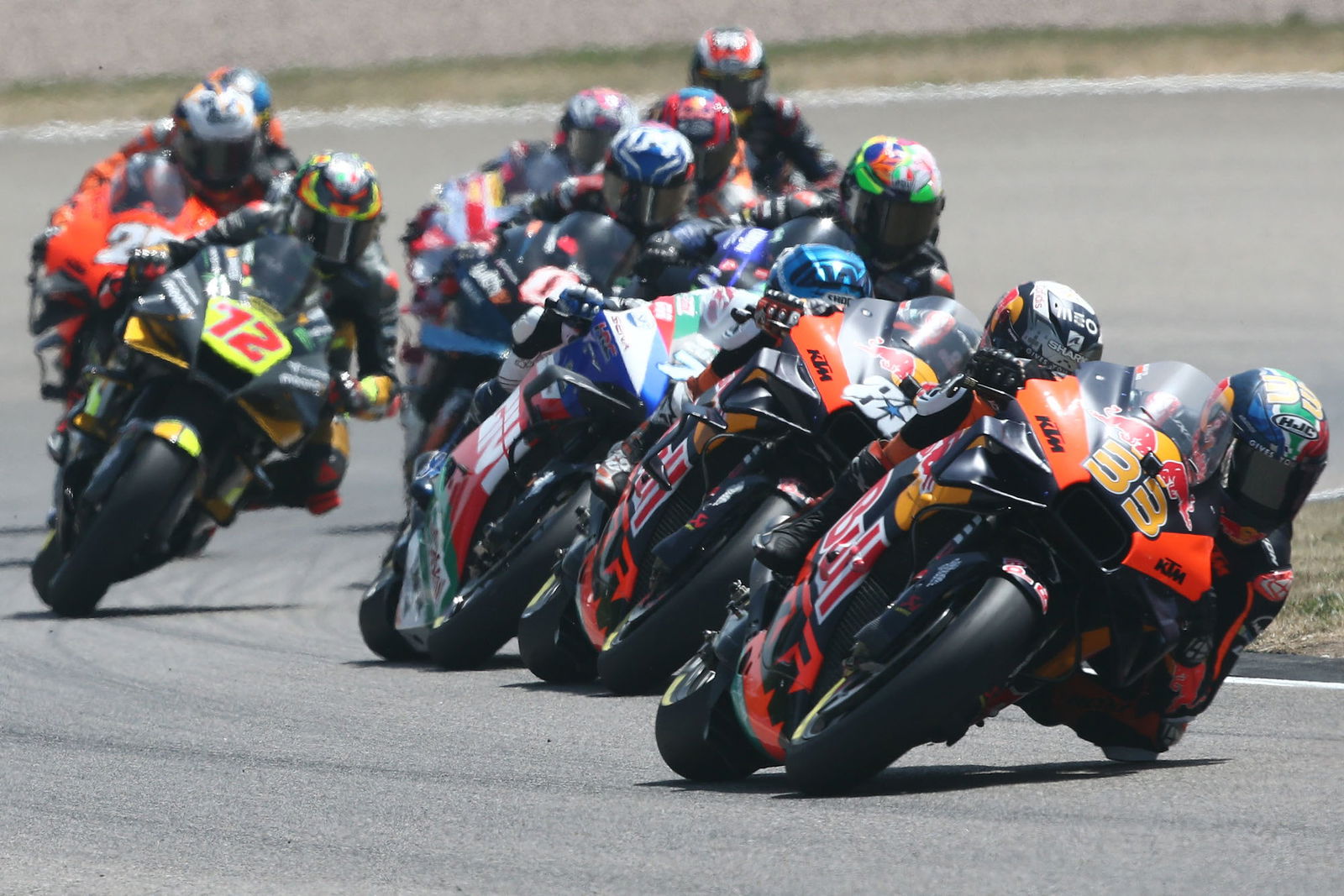
If you start to lose tracks from the calendar because they cannot fit exceedingly fast MotoGP bikes, you set a dangerous precedent. If Mugello is dropped, then so must be Misano, Sachsenring; Assen may be soon after that, Silverstone, and eventually it will be places like Lusail and Texas.
The bikes can only get so fast before you run out of tracks that are capable of hosting them safely, and before you run out of people who are capable of riding them safely, which is one of the few absolute positives of today’s MotoGP. Therefore, the bikes must slow down, but they must also become more difficult to ride, in order to maintain a level of challenge for their riders, so that their individual skill makes a difference.
The 990cc era of MotoGP is looked on with rose-tinted glasses, for sure, but it also had its genuine positives compared to modern MotoGP.

Although the bikes were very fast, and could top 200mph, the 990s were relatively rudimentary as far as ‘rider assistance’ went. Traction control and anti-wheelie, for example, were not as advanced compared to today (hence the shots of smoke pouring off tyres circa 2005 or so), and there were no ride height devices or aerodynamic wings to keep the bikes planted. Therefore, the bikes were a challenge to ride, but not excessively so as in the case of Group B, which is why Valentino Rossi was able to win the World Championship with Yamaha in 2004. The YZR-M1 was not the best bike, but he was the best rider, and he made the difference.

Fast forward 12 years to 2016, and the same thing is true. By now we are in the early days of modern downforce aerodynamics, but we are before ride height devices, and in the first year of both Michelin and the unified Magneti Marelli electronics. The tyres were hard, thanks to several failures and a desire from Michelin to avoid any more; and the new electronics were in their earliest days of development, so the bikes were hard to ride, but not excessively so - almost.
Andrea Iannone crashed at Silverstone during the British Grand Prix at Luffield, which he put down to lacking the strength, deep into the race, needed to ride his MotoGP bike on the limit. "Unfortunately just before the mid-point of the race," Iannone told MotoGP.com, I began to have fatigue in my right forearm and I was no longer able to control the bike perfectly, which caused me a lot of problems."
Who was the manufacturer of Iannone's MotoGP bike? Ducati, whose Desmosedici was, and is, the most-advanced MotoGP bike from an aerodynamic perspective. Nonetheless, the challenge provided by the bikes of the time meant that Marc Marquez was able to overcome the deficit of his Honda RC213V compared to the Ducati, Yamaha, and even Suzuki and win what was his third MotoGP title and fifth Grand Prix title in total.
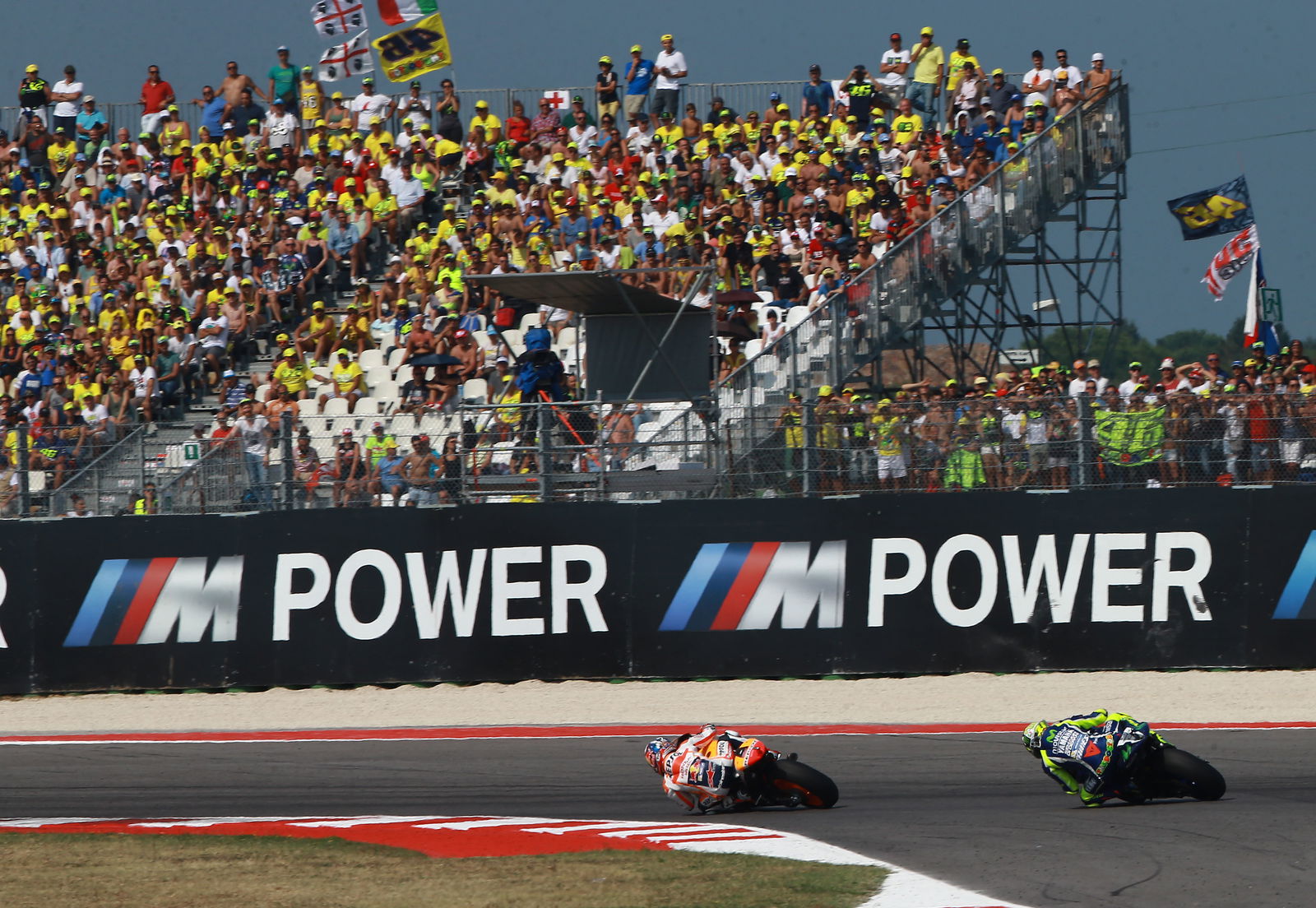
Not only that, but the extra emphasis on the rider saw some of the best, most unpredictable racing MotoGP has seen, with seven winners in a seven-race span between Jorge Lorenzo's triumph in Mugello and Dani Pedrosa's victory in Misano.
By 2023, Marquez can no longer make the difference. The Honda he continues to ride is only minorly worse than the class-leading Ducati overall, but in a technology-dominated category as MotoGP is, the ability for the rider to determine the outcome of the race above the ability of the engineers is greatly reduced. In addition, the racing is worse, because the technology has made the bikes too fast for the tyres, the front tyre in particular, and has made them faster while making the braking zones- if not shorter then at least no longer.

If the motorcycles are easier to ride, the top riders can make less difference than their rivals because less of their talent is required to go fast. If the bikes are then hard to overtake, then qualifying becomes more important, and in qualifying the grip is higher, making the bike easier to ride, and therefore reducing the impact of the rider. To qualify this, Ducati had six front row lockouts in 2022, but not a single podium lockout.
To sum what has been quite a significantly (arguably unnecessarily, perhaps nonsensically) long collection of arguments up; when Massimo Rivola talks of the need to slow MotoGP bikes down - he is right. He is right because it is not only horsepower that is making them dangerously fast, but the technology in other areas of the bike which allows that power to be used more totally, and for more of the time, by offering more grip, and more stability, which gives the rider an easier time. It is also this technology, by giving the rider an easier time, which is restricting the impact of the riders in MotoGP, and increasing the importance of the motorcycle.
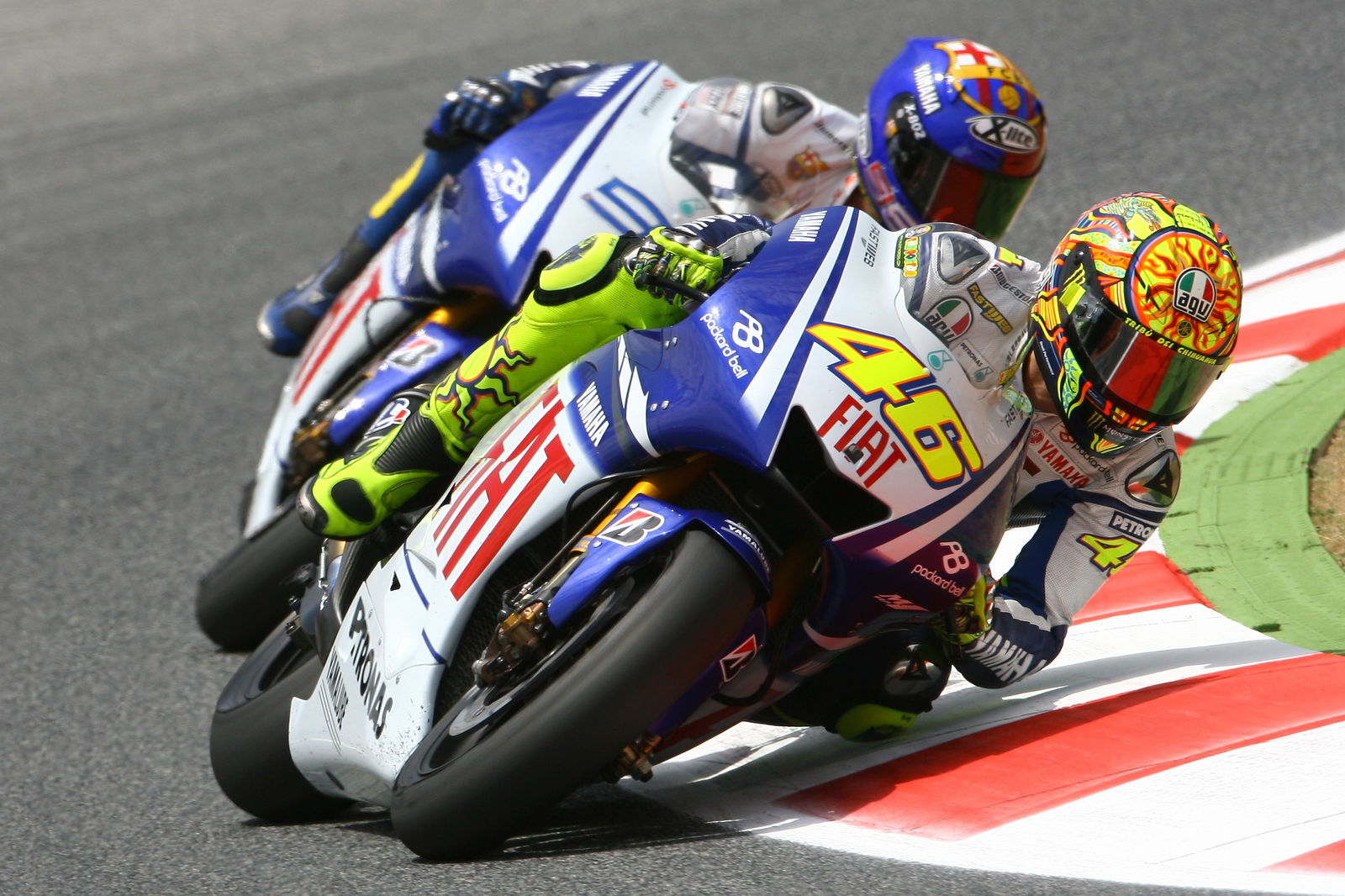
Motorcycle racing is at its best when the best riders are fighting head-to-head, consistently, on a relatively equal footing. That is why the 2009 Catalan Grand Prix is celebrated so much even nearly 14 years later; why people look back with fondness on the 500cc-era battles of Wayne Rainey and Kevin Schwantz, for example, with Hockenheim 1991 being perhaps the peak; and why many of the best races of Marc Marquez’ career are often those where he has lost, to Alex Rins in Silverstone 2019, for example, or to Andrea Dovizioso in Spielberg 2019.
Slowing MotoGP bikes down while minimising reductions in horsepower would be undoubtedly of benefit to the championship. The safety would improve, and so might the racing.
